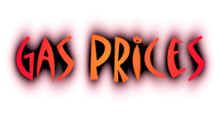METRO HOT TOPIX


In an average day, Americans pump more than 325 million gallons of gas into their cars and trucks. Only about 40 percent of that oil comes from the United States. The rest of it is called "foreign" oil. But where does the oil really come from? Most people think most of the oil comes from the Middle East, said one man at a gas station in St. Paul said. But this is perhaps one of the great fuel fallacies. In fact, the two single largest foreign oil suppliers for the United States are its two closest neighbors, Canada and Mexico. Oil from those countries makes up about 35 percent of the supply. After that is Venezuela and Saudi Arabia. The United States actually gets just as much oil from Africa as from the Middle East. In Minnesota, 80 percent of our oil comes from Canada. However, Dr. Akshay Rao, who teaches at the Carlson School of Management at the University of Minnesota, said oil does not really come from any particular country. "We generally buy from a world market," said Rao. "We do not bid on oil from a particular country." That's because oil is a commodity. Oil producers provide it to the world market. The price goes up and down based on supply and demand. That's why there is one price for a barrel of oil and not several from each oil-producing country. "You don't necessarily know where the oil is going to come from anymore than the seller knows where the oil that he or she has put up for sale is going to go," said Rao. We find out once it's shipped because the United States tracks imports. So is it merely a coincidence that Canada and Mexico are the two largest suppliers? No, Rao said. "There are advantages of shipping costs once it is purchased." After we buy oil on the market, a supplier figures out the cheapest way to get it to us. Because of their proximity, Canadian and Mexican oil is often more cost-effective. While 60 percent of our oil is foreign, it is true that the United States actually exports some of its domestic oil. We export as much as 1 million barrels of oil per month. However, much of that is sent Canada where it is refined and then sent back.
A few days ago I was having some work done at my local garage. A blonde came in and asked for a seven hundred ten. We all looked at each other and another customer asked, "What is a seven hundred ten?" She replied, "You know, the little piece in the middle of the engine, I have lost it and need a new one.." She replied that she did not know exactly what it was, but this piece had always been there. The mechanic gave her a piece of paper and a pen and asked her to draw what the piece looked like. She drew a circle and in the middle of it wrote 710. He then took her over to another car which had its hood up and asked "is there a 710 on this car?" She pointed and said, "Of course, its right there." If you're not sure what a 710 is here it is... 
|
| 
A lot of folks can't understand how we came to have an oil shortage here in our country Well, there's a very simple answer.
Nobody bothered to check the oil! We just didn't know we were getting low. The reason for that is purely geographical. Our OIL is located in Alaska, California, Coastal Florida, Coastal Louisiana, Kansas, Oklahoma, Pennsylvania, and Texas. But our dipsticks are located in Washington, DC! Any Questions? |
|
|